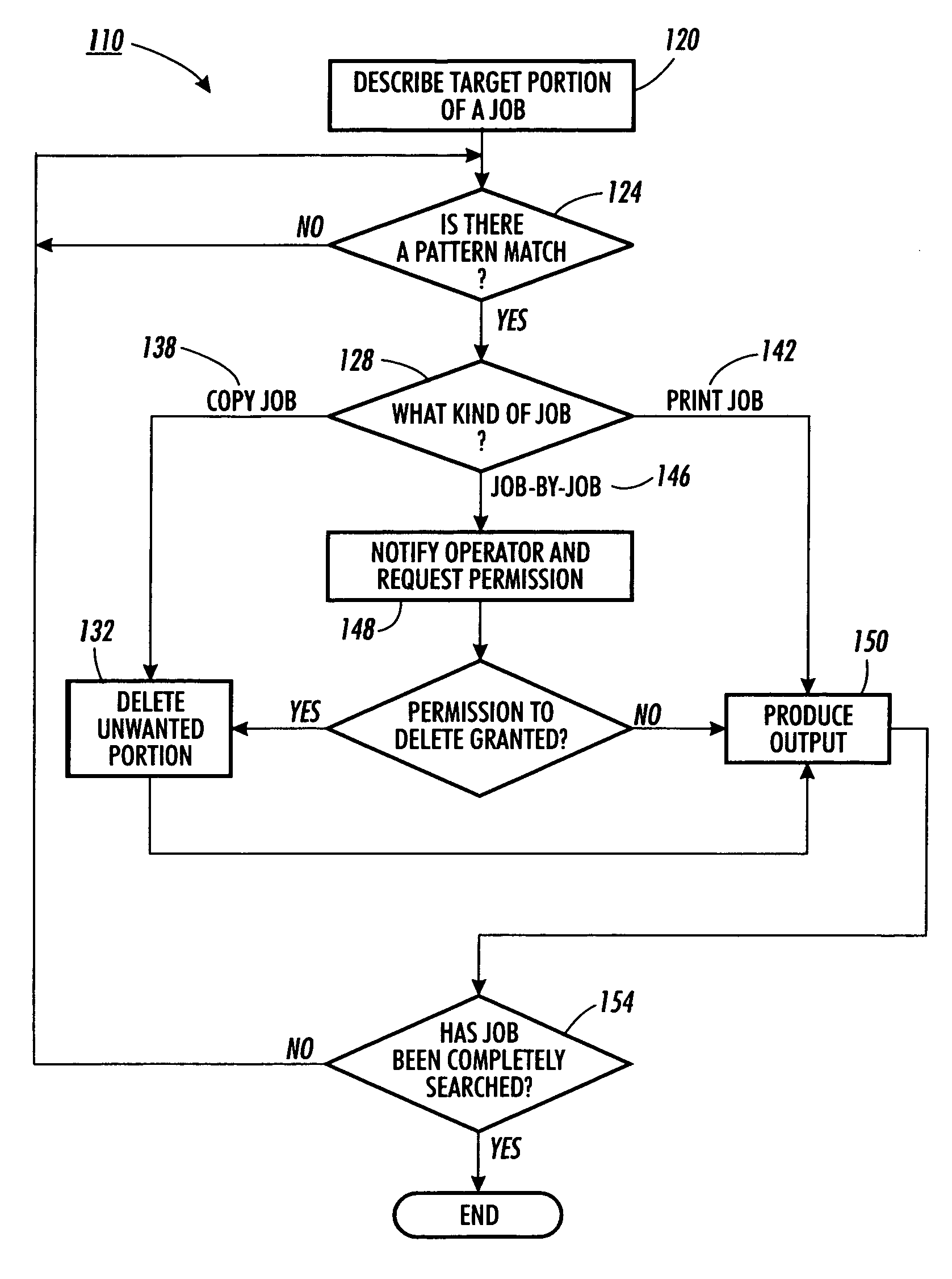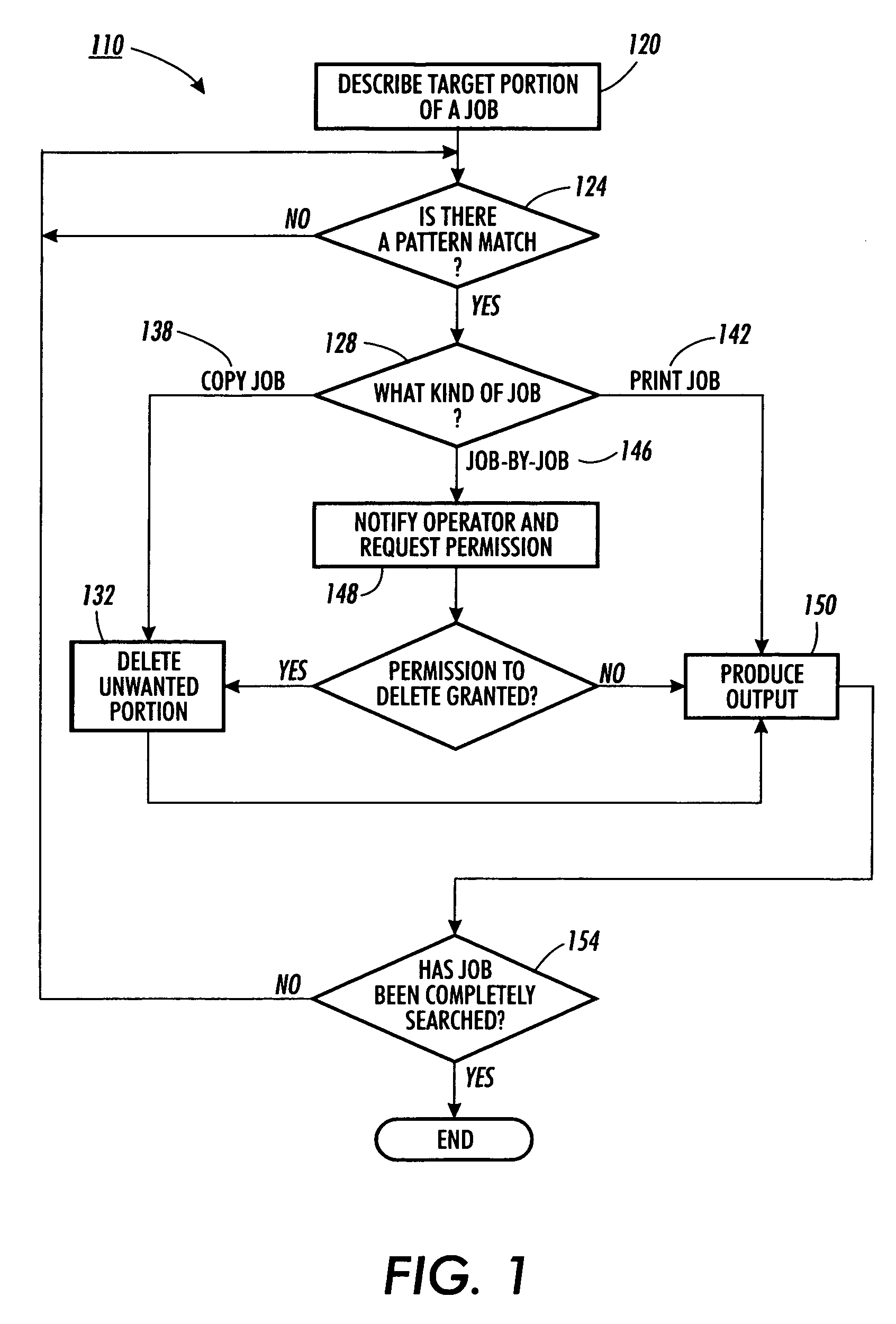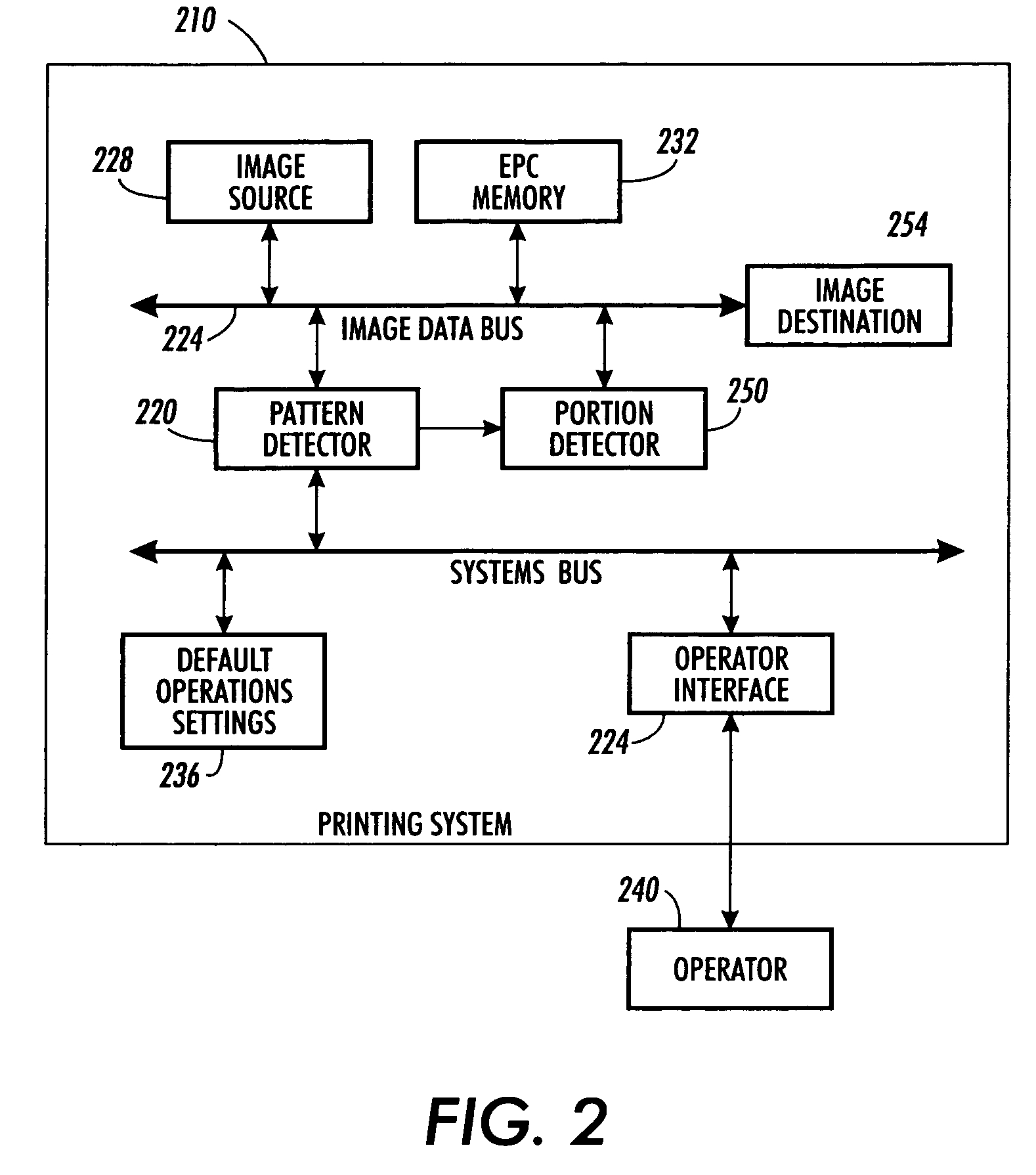Excluding unwanted pages in a printing system job
a printing system and job technology, applied in the field of job processing in the printing system, can solve the problems of inconvenient copying or faxing of blank pages, too time-consuming to worry about paper conservation, and inconvenient printing of separate pages, so as to reduce printing system consumables costs, reduce reproduction time, and reduce printing system wear.
- Summary
- Abstract
- Description
- Claims
- Application Information
AI Technical Summary
Benefits of technology
Problems solved by technology
Method used
Image
Examples
Embodiment Construction
[0019]Referring to FIG. 1, a method 110 operative to exclude unwanted or wasteful pages of a printing system job includes a target description step 120. Of course, the method 110 is also useful for removing unwanted portions of a page. In the target description step, a printing system, such as, for example, a personal computer, fax machine, document copier, or electronic publishing system, is given a description of an unwanted page. The description is for example, made a default or selected description. For example, the printing system is given a default description of a blank sheet or page. For example, a blank sheet or page is defined as any sheet having no marks or any sheet having less than a threshold amount of marking. For instance, any sheet or page that is described by input data to include marks on less that 0.5% of the area of the page is classified a blank page. Alternatively, an unwanted sheet or page is described by some other means. For example, a sample unwanted page,...
PUM
 Login to View More
Login to View More Abstract
Description
Claims
Application Information
 Login to View More
Login to View More - R&D
- Intellectual Property
- Life Sciences
- Materials
- Tech Scout
- Unparalleled Data Quality
- Higher Quality Content
- 60% Fewer Hallucinations
Browse by: Latest US Patents, China's latest patents, Technical Efficacy Thesaurus, Application Domain, Technology Topic, Popular Technical Reports.
© 2025 PatSnap. All rights reserved.Legal|Privacy policy|Modern Slavery Act Transparency Statement|Sitemap|About US| Contact US: help@patsnap.com



